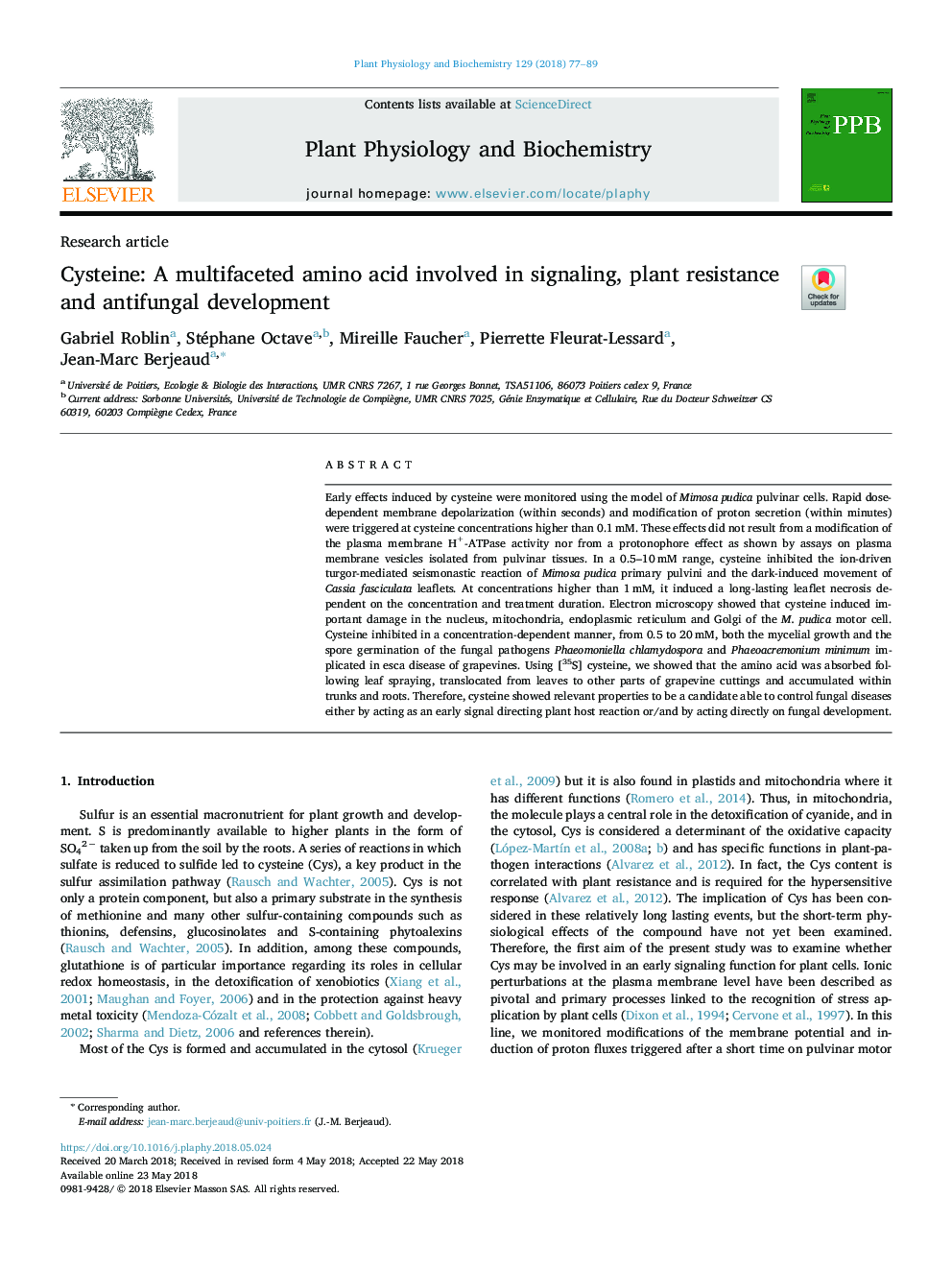| Article ID | Journal | Published Year | Pages | File Type |
|---|---|---|---|---|
| 8352740 | Plant Physiology and Biochemistry | 2018 | 13 Pages |
Abstract
Early effects induced by cysteine were monitored using the model of Mimosa pudica pulvinar cells. Rapid dose-dependent membrane depolarization (within seconds) and modification of proton secretion (within minutes) were triggered at cysteine concentrations higher than 0.1â¯mM. These effects did not result from a modification of the plasma membrane H+-ATPase activity nor from a protonophore effect as shown by assays on plasma membrane vesicles isolated from pulvinar tissues. In a 0.5-10â¯mM range, cysteine inhibited the ion-driven turgor-mediated seismonastic reaction of Mimosa pudica primary pulvini and the dark-induced movement of Cassia fasciculata leaflets. At concentrations higher than 1â¯mM, it induced a long-lasting leaflet necrosis dependent on the concentration and treatment duration. Electron microscopy showed that cysteine induced important damage in the nucleus, mitochondria, endoplasmic reticulum and Golgi of the M. pudica motor cell. Cysteine inhibited in a concentration-dependent manner, from 0.5 to 20â¯mM, both the mycelial growth and the spore germination of the fungal pathogens Phaeomoniella chlamydospora and Phaeoacremonium minimum implicated in esca disease of grapevines. Using [35S] cysteine, we showed that the amino acid was absorbed following leaf spraying, translocated from leaves to other parts of grapevine cuttings and accumulated within trunks and roots. Therefore, cysteine showed relevant properties to be a candidate able to control fungal diseases either by acting as an early signal directing plant host reaction or/and by acting directly on fungal development.
Related Topics
Life Sciences
Agricultural and Biological Sciences
Plant Science
Authors
Gabriel Roblin, Stéphane Octave, Mireille Faucher, Pierrette Fleurat-Lessard, Jean-Marc Berjeaud,
